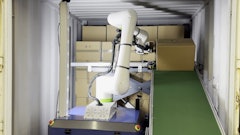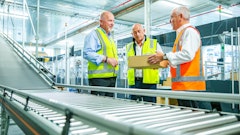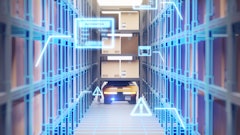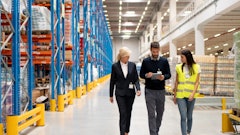
The supply chain is not about standing still. Every penny counts. Continuous improvement means finding ways to get better in all aspects of flow.
Take the example of customer returns. This reverse logistics challenge was a $760 billion problem in 2021 and still growing. Solutions are highly fragmented, full of inefficiencies and a drag on the back end of the supply chain.
Sustainability can be a way to turn this challenge into an opportunity.
Going green
Consumers increasingly want “green” or “eco-friendly” products and consider a business’ sustainability efforts and environmental impact before investing. The National Retail Federation (NRF) has reported that 80% of consumers say that sustainability is essential to them. People want to support the Earth, and their shopping behaviors prove that—whether they're buying organic products made from recycled goods or shopping with reputable sustainable brands.
The more consumers know about the problems we face with excess inventory, the more likely they are to shop more frequently with retailers addressing it in a sustainable and environmentally friendly way.
In a Forbes column about consumer demand for sustainability, almost 100% of retailers believe that consumers rank brand names higher than product sustainability when, in fact, 56% of consumers rank brand names as somewhat necessary compared to sustainability. In other words, how you manage unproductive inventory matters to the consumer.
It’s time to get creative with excess inventory and returns rather than turning them over to liquidators and resellers with no tracking metrics, disposing as trash in a landfill or burning it. Customers want a more sustainable approach. An end-to-end solution is the answer. A closed-loop reverse logistics solution not only makes the supply chain more efficient, but you also become a critical part of your company’s environmental, social, governance (ESG) initiative.
The importance of forming the right partnerships
Reverse logistics has been around for decades. The difference today is finding a partner that not only helps you minimize costs and maximize recovery but also does it sustainably. As retailers look for ways to work on their ESG goals and ultimately raise their bottom line, forming partnerships, like a third-party logistics company, is the best solution. Find a reverse logistics partner fueled by sustainability, not one that only talks about it.
Instead of sending returns to landfills, consider an option that can prove their model in a way customers prefer. A Channel Control Merchants’ consumer survey report shows that 40% of customers are more likely to shop at stores that sustainably handle returns.
If you haven’t thought about the benefits of a strategic partnership, now is the time.
Boosting your performance through ESG
Instead of focusing only on minimizing costs, think about how to maximize the recovery of an unproductive inventory. Find a solution that does it sustainably. This is not only possible but also the way forward. Ask any potential partner the following questions:
1. What will happen with our returns or unproductive inventory?
2. How will you protect our brand?
3. Can you provide detail and metrics on what happens to our products?
4. Who are you selling our products to?
5. Will you provide data to support our company’s sustainability initiatives?
The ability to resell an item can help recoup lost profit from the original return. Whether you go the route of straight cash buys or scan-based revenue sharing, ensuring you get the most for your inventory requires precision and transparency of scan-based, SKU-level data to deliver maximum recovery. Ask the right questions to ensure you find a transparent solution.
Improving our future in reverse
The problem of returns will not go away. Your company may change its customer policies, but managing reverse logistics efficiently is critical. Sustainability isn’t an additional challenge—sustainability is the solution that delivers cost savings and improves your competitive advantage.
The future is in front of us. Sustainably managing your returns can maximize recovery and support your company’s mission. Make reverse logistics part of your path forward.





























